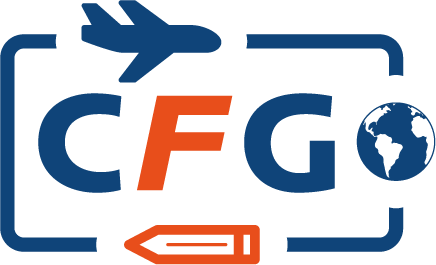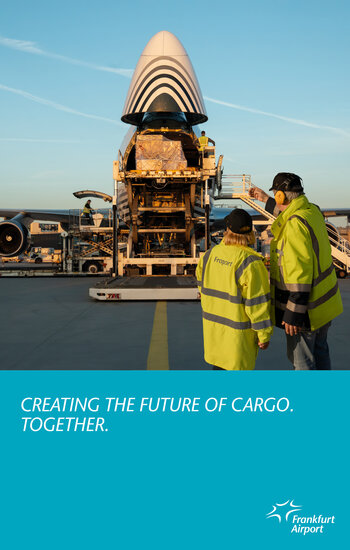“In our industry, communication is always a 2-way street – or maybe even a 24-way street,” moderator Bart Jan Haasbeek stated in the third CHAMP – ONE Record Webinar in the series, which took place on 23JUL25*, “Please adopt ONE Record!” he encouraged. IATA’s ONE Record concept is the solution for free-flowing, real-time data exchange based on original source data, regardless of the number of streets involved. Yet, eight years in and with five months to go until the 01JAN26 target for industry-wide ONE Record adoption, progress is still slow as companies representing a good quarter of all global AWB volume are not yet on track. CargoForwarder Global (CFG) wanted to know more about its status and put a number of questions to CHAMP’s Business Analyst e-Cargo CHAMP Cargosystems, Niclas Scheiber. Here’s the summary.

The first question naturally revolved around the ONE Record 01JAN26 target. While airlines representing 72% of all global AWB volume are apparently on track to meet target, according to IATA, more than 1 in 4 AWBs are not. What does that mean for the success of ONE Record come 01JAN26? CFG asked. Niclas Scheiber pointed out that “ONE Record is not just a replacement for AWB data exchange, it covers a variety of use cases.” Use cases were often cited in the 23JUL25 webinar and it seems the full potential here has yet to be unlocked. Indeed, during that panel, Nicholas Xenocostas, CCO of CHAMP Cargosystems, declared: “This is the beginning of the journey and there is lots to iron out.” Scheiber told CFG: “Our industry is typically slow and reactive, so it will take time until it will be fully established,” but also revealed “We are observing that interest and is gradually increasing.”
Where adoption is (and isn’t) happening
In answer to the question as to which segments of the supply chain have shown the fastest or slowest uptake of ONE Record, Scheiber pointed to carriers, GHAs, and IT providers as being the fast movers, whilst freight forwarders and customs authorities have been slower to adopt. His verdict: “Benefits can already be achieved between GHAs and carriers. ONE Record does not depend on forwarders.”
Tangible benefits
Despite the slower uptake from some segments, tangible benefits are already visible where partners engage. In the webinar, Nicholas Xenocostas summarized this as “Correct data, correct status, and all that in real time – this is a real game-changer.” The advice to the audience was always to start with a small use-case and expand from there, since ONE Record’s architecture inherently allows for incremental wins, even before the entire ecosystem is connected.
Scheiber listed a number of benefits that early adopters have experienced. First and foremost: “speed, accuracy, and richer data”. With cleaner data on hand more quickly, stakeholders can operate faster and more efficiently. Secondly, “the ONE Record booking pre-advice contains a lot more information compared to an FBL message, for example.” Because of that, accuracy and visibility is improved. With the information “being centrally available in ONE Record, there is also no version mismatch, and everyone involved in fulfillment can always verify the latest status of a booking straight from the carrier’s system.” That transparency does away with information silos, and creates a single shared, trustworthy data source. Lastly, early movers benefit from a clear marketing advantage. They gain a competitive edge by positioning themselves as digital leaders in an industry that is undergoing transition.
Challenges and concerns holding back adoption
CFG assumed that it is the smaller companies that are finding it a challenge to adopt ONE Record due to resource limitations and asked what IATA was doing to support them in their transition/adoption? Scheiber pointed out “ONE Record is open source, and its resources are available for free. This is in stark contrast to Cargo-IMP and Cargo-XML which are sold by IATA.”
And what feedback or concerns have freight forwarders, shippers, or customs authorities raised during the transition? CFG asked. Scheiber explained that they often cite the complexity of ONE Record and the necessity for sophisticated IT understanding. There’s also a perception – sometimes misplaced – that ONE Record is just another AWB digitization exercise, following on the heels of Cargo-IMP and Cargo-XML. As Cargo-XML met with limited or mixed success at scale, this leads to skepticism as to ONE Record’s added value. That misunderstanding can obscure its transformative potential, including new business models and deeper data integration, since the focus remains purely on messaging.
Persisting myths: setting the record straight
What are persisting myths about ONE Record that need laying to rest? CFG asked. Scheiber stated three points: First up – ‘Not just messaging’. Unlike prior standards, ONE Record is not just another messaging protocol, nor is it limited to AWB transmission. It supports a broad, API-based, decentralized data-sharing ecosystem. Secondly, it is ‘Decentralized by design’: There is no single, central IATA server. Instead, ONE Record is distributed, with many interoperable nodes – similar to blockchain networks. And lastly, it is ‘more than just AWBs’: Its scope and flexibility grant the industry tools to digitize every facet of air cargo processes.
Security: Protecting sensitive data
CFG wanted to know: What security measures are in place to protect proprietary or sensitive shipping data across a distributed supply chain? Security has been baked in from day one. Scheiber explained: “State-of-the-art API security mechanisms based on OpenID Connect standard of the OAuth 2.0 Authorization Framework are in place. This is widely used and considered to be very secure. Access can be given on a way more granular level compared to messages. For example, shipper and agent contact details or pricing and rating information can be hidden from a GHA who does not need this information from an AWB. Additionally, access can be revoked at any time.”
Future-proofing Air Cargo: AI, visibility, and sustainability
In what ways does ONE Record prepare the sector for future innovation, including AI-driven logistics, real-time visibility, and sustainability goals? This was CFG’s closing question. Niclas Scheiber summarized: “ONE Record is the IATA-standard API specification for machine-to-machine communication in air cargo for the coming years or decades.” Its extensible specification supports seamless integration with real-time tracking systems, AI applications, and sustainability frameworks – such as CO2 emissions reporting via integration with the GLEC methodology. With its API-first model, applications can retrieve the latest data or be instantly notified of changes, preparing the industry for whatever innovations the future brings. “Data sharing does not depend on the envelope or corset of a message with ONE Record. ONE Record is real-time by design, as every participant in shipment fulfillment (or any other logistics process!) can at any point retrieve the latest agreed-on status at any time (and will be instantly notified about relevant changes),” he concluded.
Nothing to lose and a great deal to gain
Though CFG feels it is unlikely that 100% ONE Record readiness will have been achieved by IATA’s 01JAN26 deadline, the message from the webinar (which also centered around CHAMP’s 1Neo Connect product that offers a “sandbox” in which to test ONE Record without risk), is that ONE Record is robust, extensible, and already delivering value. Brendan Sullivan, IATA’s Global Head of Cargo emphasized that “ONE Record unlocks new use cases and supports regulatory requirements of the future.”
To repeat Bart Jan Haasbeck’s appeal: “Please adopt ONE Record!”
*The webinar recording along with the previous events, can be found on the champ.aero website.




